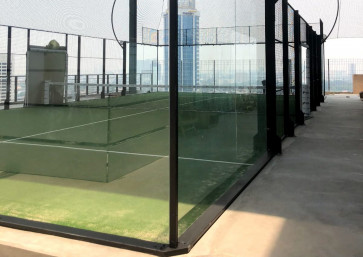Popular Reads
Top Results
Can't find what you're looking for?
View all search resultsPopular Reads
Top Results
Can't find what you're looking for?
View all search resultsBeware of hydroplaning when driving in the rain
Extra care: Motorists avoid losing control by driving carefully along roads flooded by heavy rainfall in Greater Jakarta in early January
Change text size
Gift Premium Articles
to Anyone
E
xtra care: Motorists avoid losing control by driving carefully along roads flooded by heavy rainfall in Greater Jakarta in early January. (JP/Dhoni Setiawan)
Here comes the rainy season again. When heavy rainfall lasts long, flooding becomes inevitable, which means drivers must be extra careful on the road or face the risk of a collision.
In a video uploaded to Instagram by @achmad _subechi, several drivers are seen losing control of their vehicles while passing an inundated road. Their vehicles are hydroplaning, sometimes known as aquaplaning, which occurs when floodwaters are deep enough: about 5 centimeters.
On the official Royal Automobile Club (RAC) website, Andrew Brookes explains that hydroplaning happens when a layer of water is allowed to build up between a vehicle’s tires and the surface of the road beneath.
“At this point, the tires cannot grip on the road and this causes a lack of traction, which means the driver loses control and is unable to steer, brake or accelerate,” he writes.
Hydroplaning can be made worse by the condition of a vehicle’s tires and the speed at which the vehicle is traveling.
Romi, 40, who drives to his office in Daan Mogot, West Jakarta, acknowledges how inundated roads can be a nightmare for motorists.
Accidents frequently occur when cars move at high speed on an inundated road.
“Driving on inundated roads can be quiet frightening. It can easily cause an accident, especially when the tires are worn out or bald.”
“Bald” tires, considered by experts a threat wear indicator (TWI), can no longer function properly in deep water.
“That’s why I check my tires on a regular basis. I don’t want to face the risk of an accident.”
It’s said that good-quality tires can clear the equivalent of a bucket of water off a road every seven seconds, meaning that tires in top shape can handle a fair amount of water when driving in wet conditions.
Conversely, tires with a low tread will struggle to clear as much water and could, in the wrong conditions, make the issue worse and allow the layer of water to build up beneath the tires.
JP/R Berto WedhatamaHeavy rainfall in Jakarta is expected to last until March, but hydroplaning can be avoided.
If your car starts hydroplaning, don’t panic. To help control an aquaplaning vehicle, do not hit the brakes. Instead, gently ease off the accelerator, hold the steering wheel straight, and switch off cruise control mode if you have it on.
“When the car begins to gain control you can begin to brake to bring your speed down,” advises Brookes.
When driving on wet or inundated roads, you should always watch your speed.
“Your tires will have less chance of gripping to the road if you’re traveling at a higher speed,” he says.
“Remember, too, that stopping distances can double in wet conditions, so it’s important not to drive too fast and get too close to the vehicle in front.”
More attention should also be paid to tires during the rainy season.
“You have to keep your tires in good condition. Tires in poor condition can contribute to aquaplaning as they might struggle to clear enough water off,” Brookes points out.
Therefore, it’s important to regularly check your tires to make sure they are in good condition and are properly inflated.
The tires of a car in front of you will probably make “tracks” in the water.
“This is where they will have already displaced some of the rainfall, so by following the tracks at a safe distance, you can reduce your chances of aquaplaning.”











